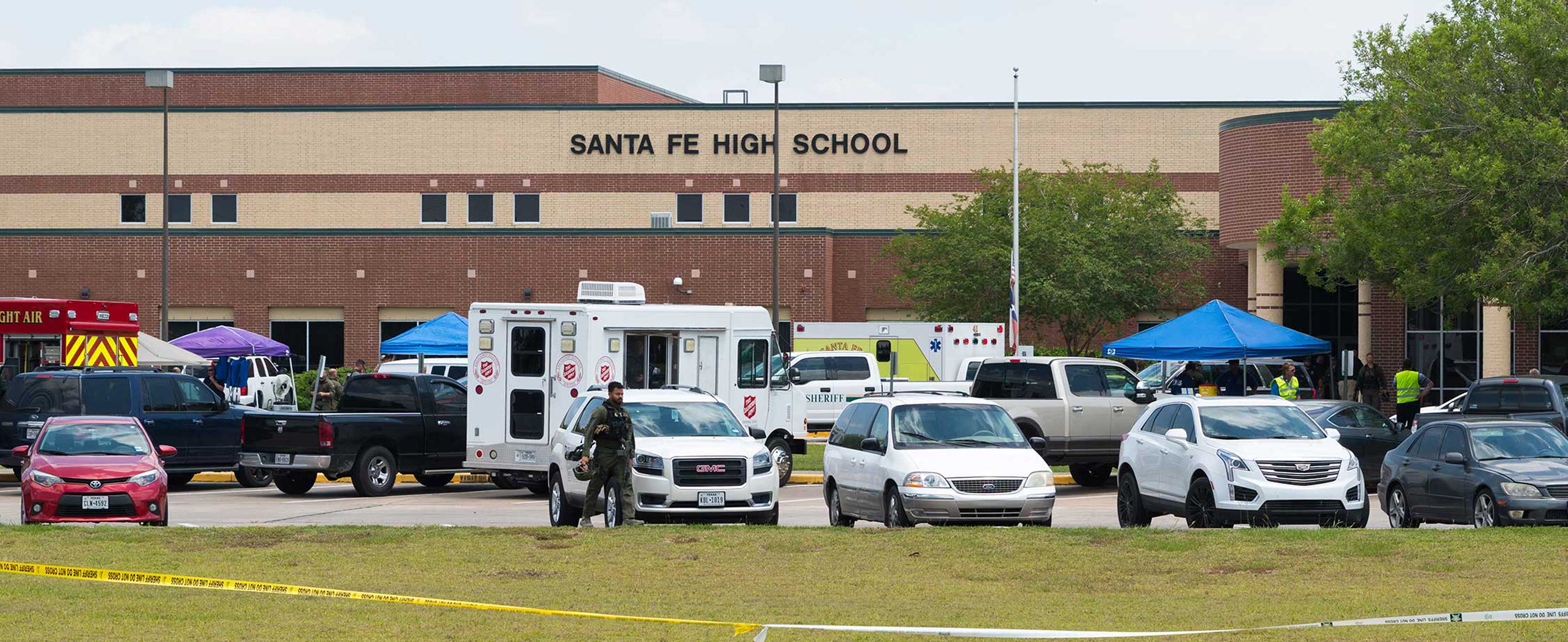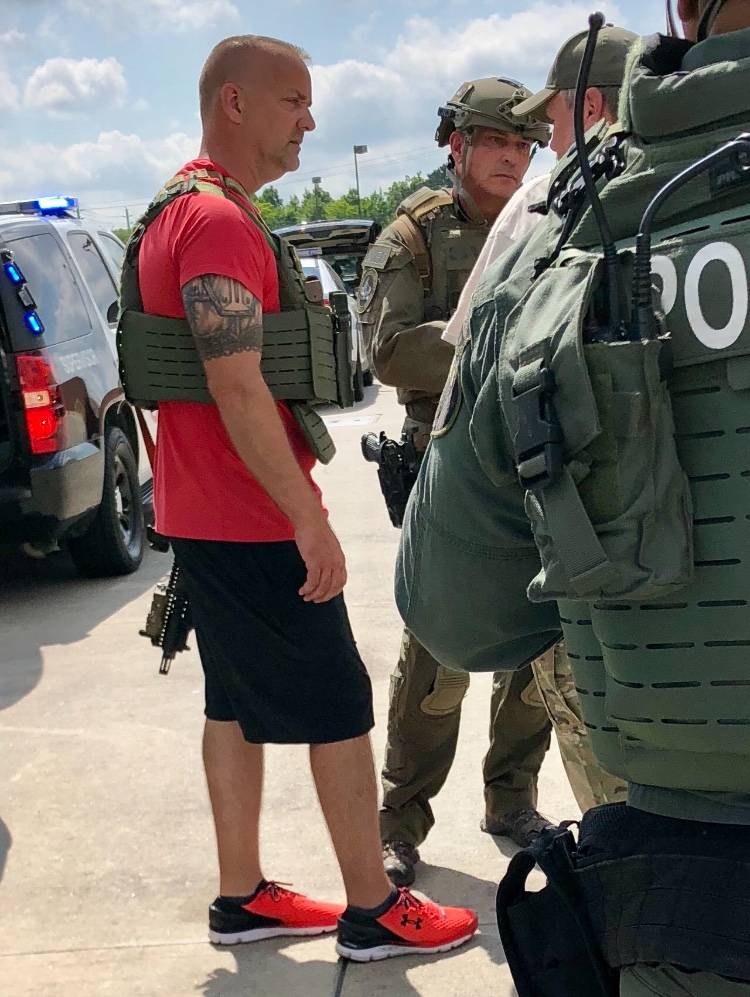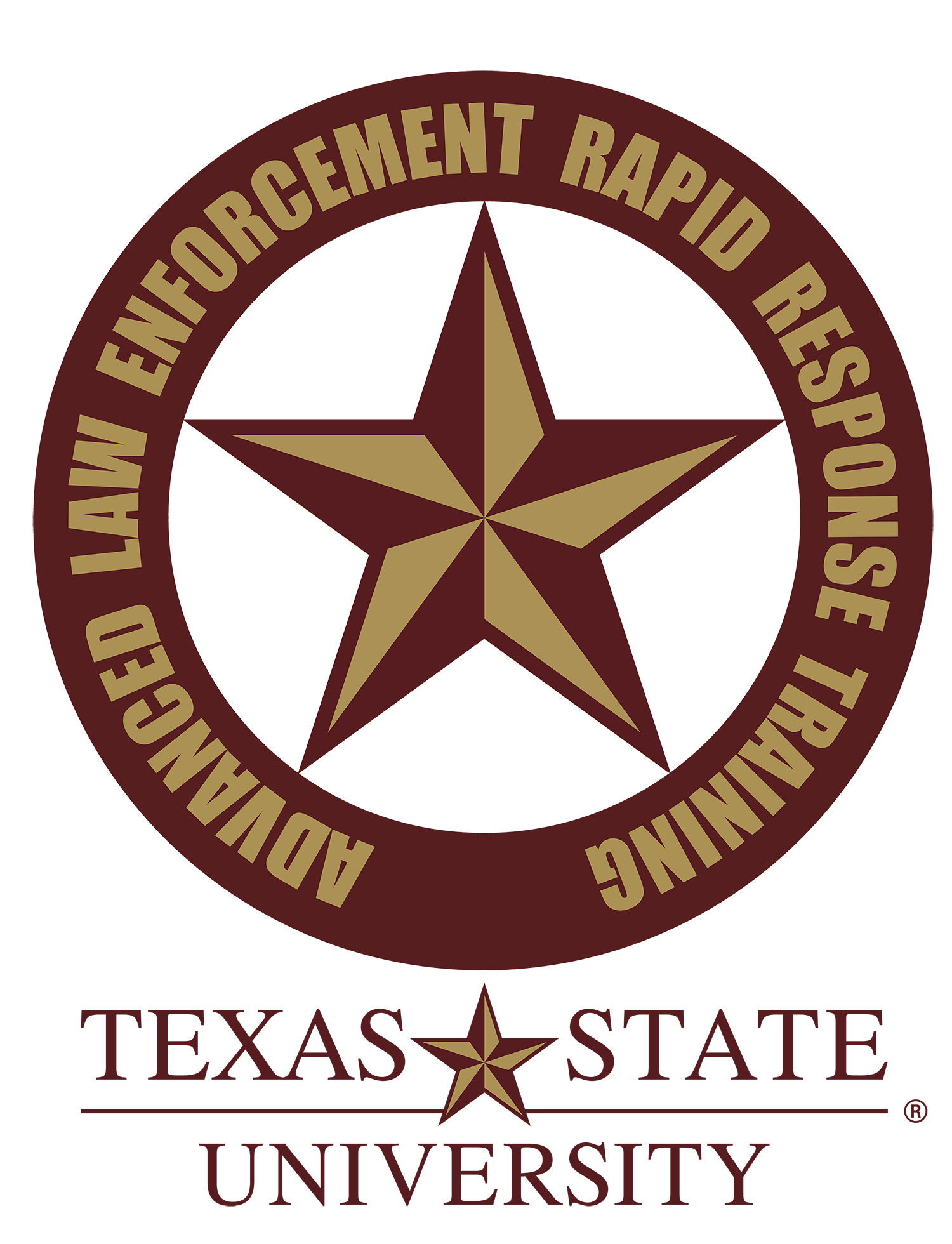Lessons learned close to home: The Santa Fe, TX shooting
John Curnutt, Assistant Director of ALERRT | October 1, 2018

On May 18, 2018 a 17-year-old student walked into the Santa Fe High School in Santa Fe, Texas, wearing a trench coat and carrying two weapons: a .38 pistol and a shotgun. The gunman walked into one of the classrooms and began shooting. It has been reported that a teacher saw the gunman and pulled the fire alarm immediately before the shooting started to warn the entire campus of what was about to happen. Instantly students and staff reacted. Some rushing out of the room and others into closets, closing and barricading the door to prevent the gunman from getting in. The gunman fired rapidly in the classroom, then walked over to the closet. He taunted the students inside the closet, then shot through the door and walls.
Classrooms in the immediate area began closing and locking doors. Students helped teachers barricade. One of those students is the son of Officer Troy Dupuy, a Houston SWAT officer and ALERRT adjunct instructor. Troy’s son knew what to do because his dad had taught him. Dupuy and his son watched the “Avoid, Deny, Defend” video together and discussed what options might exist in different settings, like his school, mall or church.

A pair of Santa Fe ISD Officers arrived and attempted to engage the gunman. They had both been through ALERRT active shooter training and the ALERRT Level 2 (medical) class in this very school only a year before. One of the officers was struck by a blast from the shotgun in his arm, striking the artery near his elbow. The injured officer was pulled to safety by the ISD Police Chief. For the next several minutes, officers arrived on scene and moved up to where the gunman was barricaded and had been firing at officers in the hallway. One of them was ALERRT adjunct instructor Cliff Woitena. Woitena had been dropping his kids off at school not far away when the call at Santa Fe High School went out. Cliff responded to the scene, donned his bulletproof vest, made his rifle hot and then ran inside the school.
Agencies in the area had been conducting this training for years. Everyone in the area knew the ALERRT instructors well and that instant recognition helped break the ice quickly between multiple agencies involved. Woitena arrived just as the shooter was talking about giving up. The deputy talking to the shooter was remarkably calm and even polite to the suspect, which helped expedite getting him out of the room. At one point, the deputy giving verbal commands had the shooter lay down in front of the doorway. Woitena told the deputy to have the suspect crawl away from the door and come closer to their position. It was similar to the threshold evaluation drill that had been practiced or taught hundreds of times before by some of them on scene. The suspect was placed in handcuffs and taken from the scene.
With security established in their immediate area, and communication with outside units flowing, medical interventions and evacuation plans started working furiously. ALERRT adjunct instructors Pat Bradshaw, Stephen Antley and Nick Palomo arrived on scene and quickly took teams in to begin locking down critical areas and conducting searches. Outside, another ALERRT adjunct instructor, Kevin Nichols, had arrived on scene and began to help make sense of the chaos inside the command post. As resources arrived there had to be a plan on where to send them. Nichols and other ALERRT trained leaders helped filter through the chaotic fog that had descended upon the scene.
Speaking with our colleagues and first responders after the incident, these are the top five lessons learned from the Santa Fe shooting:
1. The most important lesson is the absolute importance of intense, frequent, scenario-based training.
Also key is the importance of building relationships with other agencies and members of the community who’ll play a vital role in the response and recovery of an active shooter incident. Hosting a training is an important first step – but it’s critical that local responders, leaders and community members create a culture of preparedness.
2. Pack essential medical equipment and rapid deployment gear (like a bulletproof vest) in one go-bag.
Having mission essential equipment spread throughout your vehicle will result in most of it getting left behind as you arrive on scene and purposefully sprint towards the gunfire.
3. Clear communication is essential, whether verbal or non-verbal.
Teams of officers split off in all directions to systematically clear the school after the attack had been stopped and the injured had been transported from the scene. Santa Fe High School had a box containing campus maps, which were helpful for first responders. There were several locked doors that were never entered but were called “clear.” Be careful the terminology you use and stage personnel at strategic locations throughout the building as the search is conducted to maintain history on what has and has not been done.
4. Communicate and coordinate before an event so responders know where to find necessary resources.
In Santa Fe High School, there were several locked doors that needed to be opened. You must have a way to open them, whether it’s keys or breaching tools. Know who you can get keys from and plan with them before an incident so everyone knows where to find those key-holders.
5. Identify meet-up locations in advance of an incident.
The staging area or the Command Post are good places for building administrators to assemble. Reunification of students with their families must be planned ahead of time, with all stakeholders knowledgeable of the plan or where to direct frantic parents.
The attack on Santa Fe High School would have been far worse than it was without the investment made by local responders, the school and the community in the years prior to that day. On behalf of the ALERRT Center, I’d like to thank every single one of them. I’d especially like to express our immense gratitude to the instructors in that area for consistently advocating for more training and for effective policy and organizational change. It is up to every single one of us, and especially our leaders, to ensure that sufficient investment is being made into protecting our communities.

About ALERRT
The Advanced Law Enforcement Rapid Response Training (ALERRT) Center at Texas State University was created in 2002 to address the need for active shooter response training for first responders. In 2013, ALERRT at Texas State was named the National Standard in Active Shooter Response Training by the FBI. ALERRT has trained more than 130,000 law enforcement and fire officials nationwide in dynamic, force-on-force scenario-based training.
SWAT Officer and ALERRT adjunct instructor Troy Dupuy and his son, a Santa Fe High student, were interviewed by KHOU11 Houston News after the incident. View the video interview here.
Share this article
For more information, contact University Communications:Jayme Blaschke, 512-245-2555 Sandy Pantlik, 512-245-2922 |